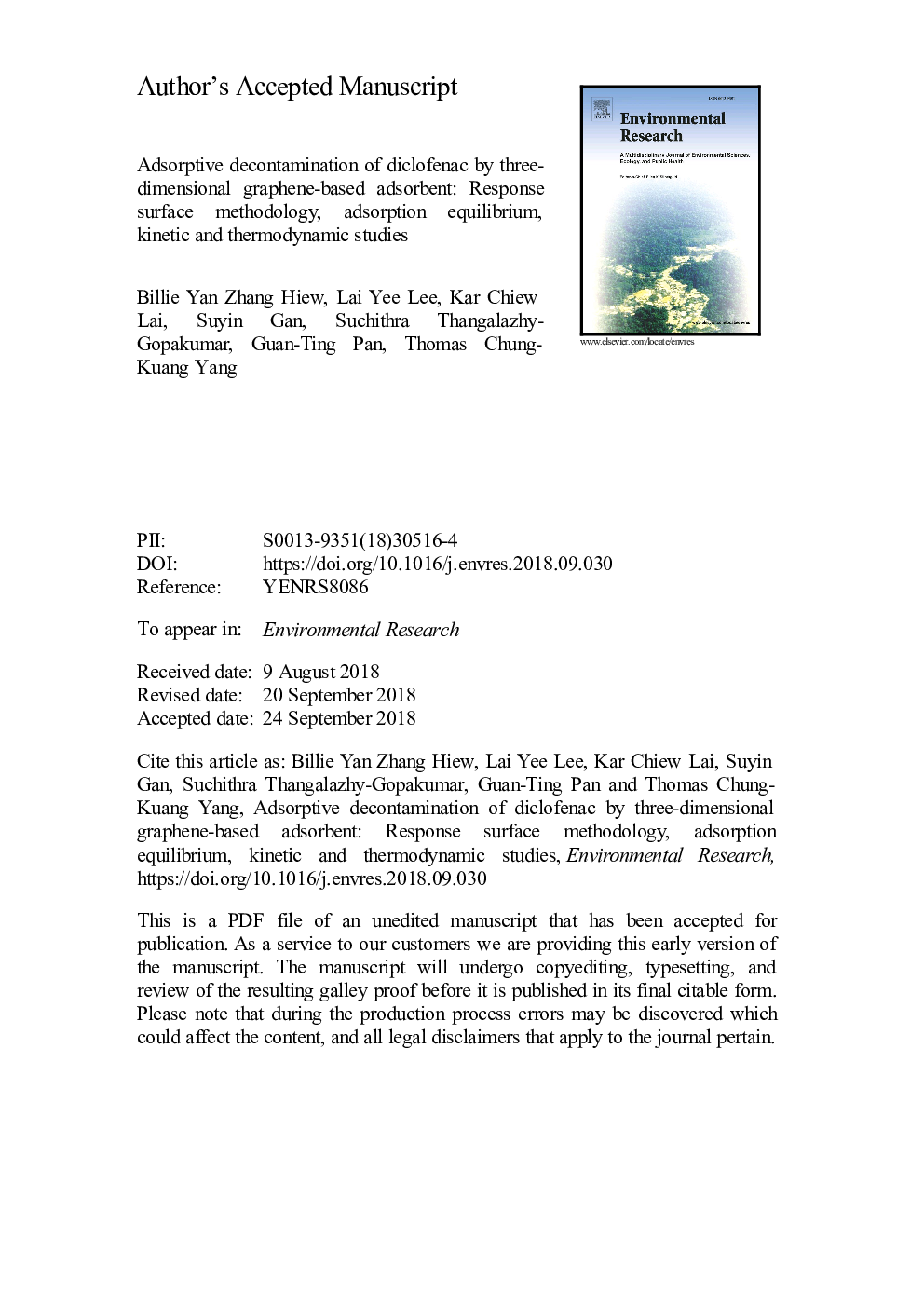| کد مقاله | کد نشریه | سال انتشار | مقاله انگلیسی | نسخه تمام متن |
|---|---|---|---|---|
| 11263501 | 1701040 | 2019 | 49 صفحه PDF | دانلود رایگان |
عنوان انگلیسی مقاله ISI
Adsorptive decontamination of diclofenac by three-dimensional graphene-based adsorbent: Response surface methodology, adsorption equilibrium, kinetic and thermodynamic studies
دانلود مقاله + سفارش ترجمه
دانلود مقاله ISI انگلیسی
رایگان برای ایرانیان
کلمات کلیدی
موضوعات مرتبط
علوم زیستی و بیوفناوری
علوم محیط زیست
بهداشت، سم شناسی و جهش زایی
پیش نمایش صفحه اول مقاله

چکیده انگلیسی
Pharmaceutical residues are emerging pollutants in the aquatic environment and their removal by conventional wastewater treatment methods has proven to be ineffective. This research aimed to develop a three-dimensional reduced graphene oxide aerogel (rGOA) for the removal of diclofenac in aqueous solution. The preparation of rGOA involved facile self-assembly of graphene oxide under a reductive environment of L-ascorbic acid. Characterisation of rGOA was performed by Fourier transform infrared, scanning electron microscope, transmission electron microscopy, nitrogen adsorption-desorption, Raman spectroscopy and X-ray diffraction. The developed rGOA had a measured density of 20.39â¯Â±â¯5.28â¯mg/cm3, specific surface area of 132.19â¯m2/g, cumulative pore volume of 0.5388â¯cm3/g and point of zero charge of 6.3. A study on the simultaneous interactions of independent factors by response surface methodology suggested dosage and initial concentration as the dominant parameters influencing the adsorption of diclofenac. The highest diclofenac adsorption capacity (596.71â¯mg/g) was achieved at the optimum conditions of 0.25â¯g/L dosage, 325â¯mg/L initial concentration, 200â¯rpm shaking speed and 30â¯Â°C temperature. The adsorption equilibrium data were best fitted to the Freundlich model with correlation coefficient (R2) varying from 0.9500 to 0.9802. The adsorption kinetic data were best correlated to the pseudo-first-order model with R2 ranging from 0.8467 to 0.9621. Thermodynamic analysis showed that the process was spontaneous (âG = ââ¯7.19 to ââ¯0.48â¯kJ/mol) and exothermic (âH = ââ¯12.82 to ââ¯2.17â¯kJ/mol). This research concluded that rGOA is a very promising adsorbent for the remediation of water polluted by diclofenac.
ناشر
Database: Elsevier - ScienceDirect (ساینس دایرکت)
Journal: Environmental Research - Volume 168, January 2019, Pages 241-253
Journal: Environmental Research - Volume 168, January 2019, Pages 241-253
نویسندگان
Billie Yan Zhang Hiew, Lai Yee Lee, Kar Chiew Lai, Suyin Gan, Suchithra Thangalazhy-Gopakumar, Guan-Ting Pan, Thomas Chung-Kuang Yang,